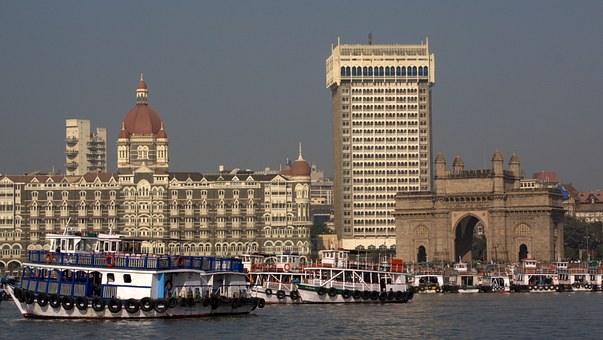Stereotyping A People: The Case of the Native Americans

Stereotyping A People: The Case of the Native Americans
Stereotypes are biased opinions which one group of people have towards another. The primary problem with stereotypes, however, lies in the fact that they do not project themselves as opinions but, instead, are presented as incontrovertible facts. Indeed, as Hinton (1993) maintains, "stereotyping can be seen as a more extreme form of typing where we see a whole group of people as homogeneous, with the same characteristics" (56). In general, stereotypes derive from behaviours which may be observed in one, or a few members, of a particular group by members of another group. Instead of presenting those behaviours as having been observed in a minority, they are projected as being particular to the entire group and, indeed, as being immutable social and psychological characteristics. Over time, people come to believe these stereotypes as literal representations of an undeniable reality and, accordingly, perceive of and treat members of the stereotyped group from within the confines of these biased opinions.
The United States, despite its being a heterogeneous, pluralistic society with a supposedly liberal and multicultural society, is a virtual hotbed of stereotypes. There is hardly an ethnic, racial, religious or cultural group in the US which is not defined in accordance with a set of, often unflattering and negative, stereotypes. Indeed, as Slotkin (2001) maintains, the entire notion of the "melting pot," let alone that of the "many as one," is nothing but a myth (469). The various ethnic, racial, religious and culture groups in the country have not melted into one another and are, most definitely, not one. They are separated by each group's belief in its own difference from the others and by stereotypes which effectively determine the manner in which each group will be perceived of by the others; stereotypes which are ultimately founded upon the exaggerated representation of differences. According to Aleiss (1995) Among the many stereotyped groups in the United States, few have been so persistently perceived and treated from within the narrow, prejudicial and often erroneous confines of stereotypes as have been the American Indians/Native Americans. Following a brief overview of the biased views surrounding American Indians, the translation of stereotypes into actual practices shall be analyzed in relation to the military.
It has been theorised that anti-American Indian stereotypes emerged as a consequence of the relationship between ethnicity and nationality. In his overview of this theoretical conceptualization, Slotkin (2001) contends that perceptions of an immutable relationship between ethnicity and nationality, compounded with an overwhelming determination to create a nation which was reflective of their identity, beliefs and worldview, literally drove the early European settlers to impose images of savagery upon the native Americans, thereby furnishing a justification for their annihilation. As Todorov (1984) explains, the earlier settlers had, either directly or indirectly, been pushed out of their native lands primarily because they simply did not fit in. Upon settling in the New World, they were determined to create a nation which reflected who they were and design a culture which echoed their values and promoted their social, economic, political and ideological worldviews. Within the context of this particular nation and culture building project, the American Indian functioned as an anomaly, an obstacle to the fulfilment of the stated. Consequently, the realization of the settlers' articulated ambition became inextricably linked to the removal of the stated obstacle, ultimately leading to a violent war against the Native Americans. This war, as Sandberg (2006) argues, was, on the surface, morally and ethically unjustifiable insofar as it sought the extermination and elimination of the territory's rightful owners and inhabitants. It gained legitimacy and, hence, became a justifiable war, through the promotion and propagation of stereotypes which effectively depicted the Native American as a savage, a dangerous creature which had to be violently tamed or exterminated (Sandberg, 2006). Consequently, anti-American Indian stereotypes effectively emerged for the provision of justifications for the extermination of a people and are rooted in perceptions of an immutable relationship between ethnicity and nationality; a perception which allows for neither the inclusion nor the embrace of other races/ethnicities into the nation.

Insofar as anti-American Indian stereotypes primarily aimed towards the justification of an otherwise unjustifiable war of extermination against a people, these stereotypes focused upon the savagery and inhumanity of this particular race. As Mieder (1993) notes, the majority of the stereotypes surrounding American Indians sought their depiction as a savage, semi-animalistic race, ultimately lending to the popular view that "the only good Indian is a dead Indian" (39). Whether as regards physical characteristics or socio-cultural traits the Native American was portrayed as the very antithesis of the `civilized' Anglo-Saxon settlers/pilgrims. While the one was white, believed in God, lived in houses and cities, and dressed modestly, the other was red, believed in multiple `fantastical' gods, lived in wigwams, had an intimate, almost base, relationship with nature and were hardly to be distinguished from the animals as regards mode of dress (Mieder, 1993). Anti-native American stereotypes, in short, projected this race as everything that the `human,' the civilized man, was not.
Given the biased perceptions of, and prejudices surrounding Native Americans, it is hardly surprising to note these stereotypes effectively determined the roles, tasks and functions assigned to the Native Americans who participated in both World War II and the Vietnam War. During World War II, Native Americans, irrespective of whether they had volunteered for the war or were conscripted, were largely isolated from the rest of the military. According to Haan (1973), they were entered into military units which were largely comprised of other minorities, with these units being primarily viewed as unimportant and consequently, denied much of the services and supports extended to other units. In other words, prejudicial perceptions of American Indians extended to their being segregated within the military and lent to the supposition that they were hardly ca[able of playing a pivotal or important role in the war. Quite simply stated, they were largely seen as a lesser race whose capacities could hardly extend to their being able to successfully operate the latest military equipment or, indeed, to take a constructive and decisive stand against the enemy. As a matter of fact, the American Indian soldier was viewed as expendable (Haan, 1973).
During the Vietnam War and, as a consequence of both the American Indian World War II war record and the Civil Rights Movement, segregation was no longer evident but, as was the case with World War II, stereotypes determined both the assignment and functions awarded the Native American soldier. In reference to both wars, Slotkin (2001) notes that perceptions of American Indians as expendable, not to mention the belief that "the only good Indian is a dead Indian," determine that the native American soldier be the first to undertake scouting missions. The proclivity towards the selection of American Indians for this particular task was determined by a set of stereotypes. These were that the American Indians were sly, stealthy and light-footed, implying that they could be sent close to, or behind, enemy lines without being detected; that American Indians, consequent to the intimate relationship they shared with nature, could find their way across unknown territory and could move about in darkness and shadows without getting lost; and that, were the American Indian scout captured, it would hardly be a tremendous loss (Slotkin, 2001).
Proceeding from the belief that the "only good Indian is a dead India," apart from scouting tasks, in both World War II and the Vietnam War, American Indians were often at the frontlines. As Dower (1987) claims, the overriding conceptualisation of the American Indian as a savage, and an expendable one at that, determined that the American Indian soldier often be sent to the frontlines of battle, especially when the likelihood of hand-to-hand combat was high. This tendency was apparent in both World War II and Vietnam (Dower, 1987). The implication here is that irrespective of the achievements of American Indians in World War II, the Vietnam War witnessed their treatment according to the same set of stereotypes which had earlier determined the role and function they were assigned in World War II.
The fact of the matter is that in both of the referenced wars, the American Indian soldier was viewed from within the confines of popular stereotypes. The outcome of this was an undeniable tendency towards their assignment of tasks and responsibilities which correlated to these stereotypes. Hence, regarded as the very antithesis of the civilized human, they were segregated in platoons and units which were comprised of other American Indians and minority groups. Furthermore, popular images of American Indians as bloodthirsty savages influenced their placement on the frontlines and in hand-to-hand combat. Beyond that, stereotypes further determined that they act as scouts and pointers. Above all, the overriding perception of them as expendable meant that they were often assigned dangerous tasks, whether as scouts or hand-to-hand combatants. The point here is simple; the stereotyping of American Indians determined their military placement and, to a large degree, imposed particular tasks upon them, irrespective of whether or not the selected individuals were genuinely capable. Ethnic stereotypes simply lent to the assumption that they were. It is apparent, therefore, that the potential of the American Indian soldier was never fully realized in either of these wars as their responsibilities were determined by bias. Hence, Mieder (19930 notes, the military achievements of this particular group effectively implies that they proved their abilities as soldiers and combatants against the odds.
Bibliography
Aleiss, A. (1995) `Prelude to World War II: Racial unity and the Hollywood Indian.' Journal of American Culture. 18(2): 25-34.
Dower, J.W. (1987) War Without Mercy: Race and Power in the Pacific War. NY: Pantheon.
Haan, R.L. (1973) `Another example of stereotypes on the Early American Frontier: The imperialist historian and the American Indian.' Ethnohistory, 20(2), 143-152.
Hinton, P.R. (1993) The Psychology of Interpersonal Perception. London: Routledge.
Mieder, W. (1993) `The only good Indian is a dead Indian: History and meaning of a proverbial stereotype.' The Journal of American Folklore, 106(419): 38-60.

Sandberg, B. (2006) `Beyond encounters: Religion, ethnicity, and violence in the early modern Atlantic world.' Journal of World History, 17(1): 1-25.
Slotkin, R. (2001) `Unit pride: Ethnic platoons and the myths of American nationality.' American Literary History, 13(3), 469-498.
Todorov, T. (1984) The Conquest of America: The Question of the Other. NY: Harper & Row.
http://www.articlesbase.com/culture-articles/stereotyping-a-people-the-case-of-the-native-americans-4582794.html A Couple Of Ideas Which May Help You Uncover The Very Best Sundress For Summer season Agra Holiday Packages Saga of Royal Splendor The Commercialization of the Native American South Africa's Drakensberg Moutains The Great Harlem Globetrotters Basketball Team Villas in Cyprus offer a bargain for a dream holiday Kerala Tours – The Perfect Destinations for Summer Holidays Unique Experiences with Luxury Tours in India Proper Installtion Plays A Great Role While Relaxing Limo Hire at the most popular partying destination in UK Nottingham Getting the Most out of Your Travels Creating Prom With an Effect at Prom Venues in London Be aware of French swimming pool regulations